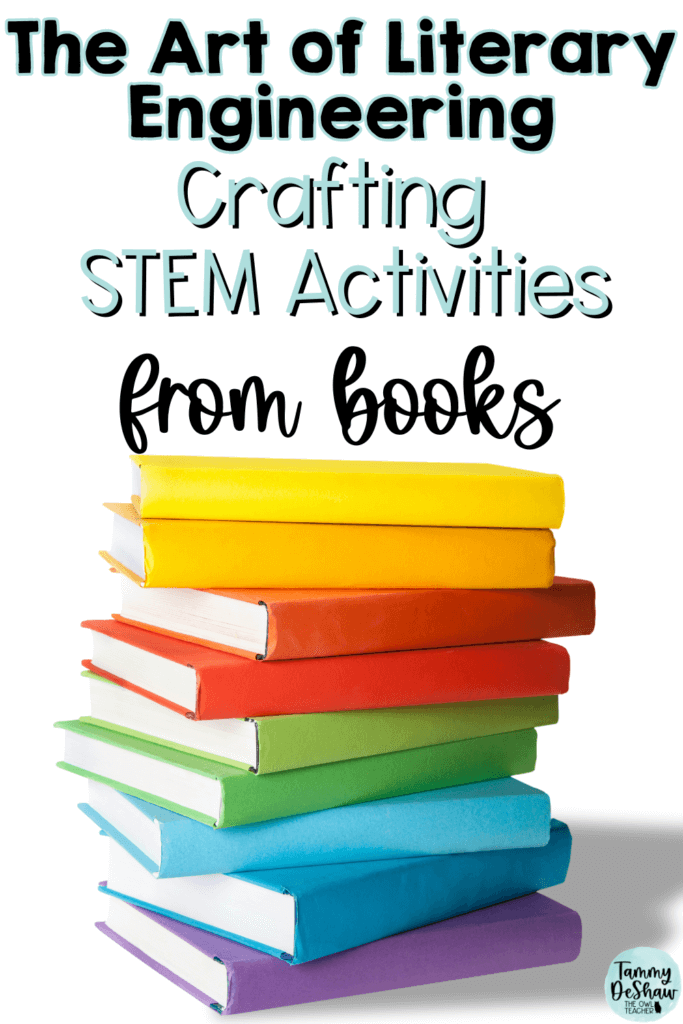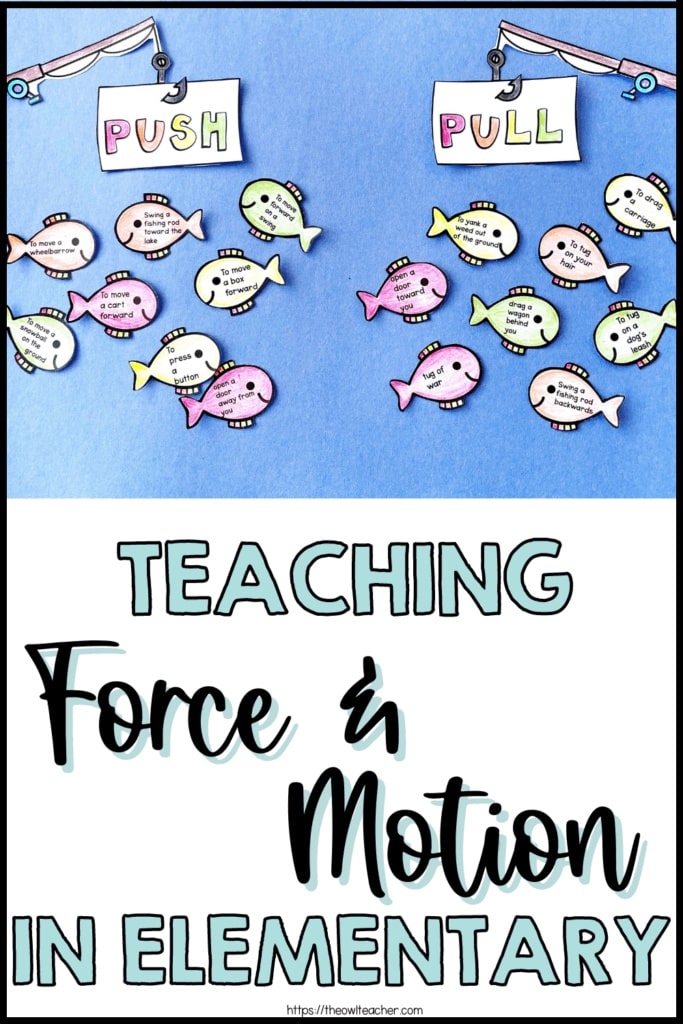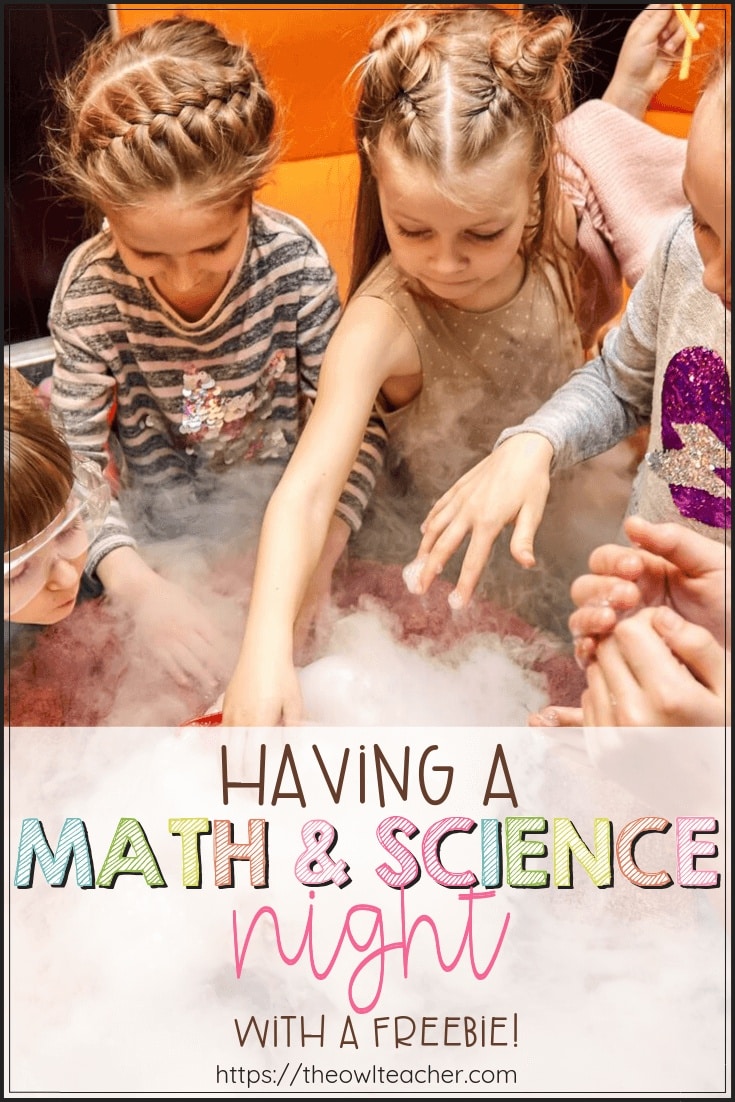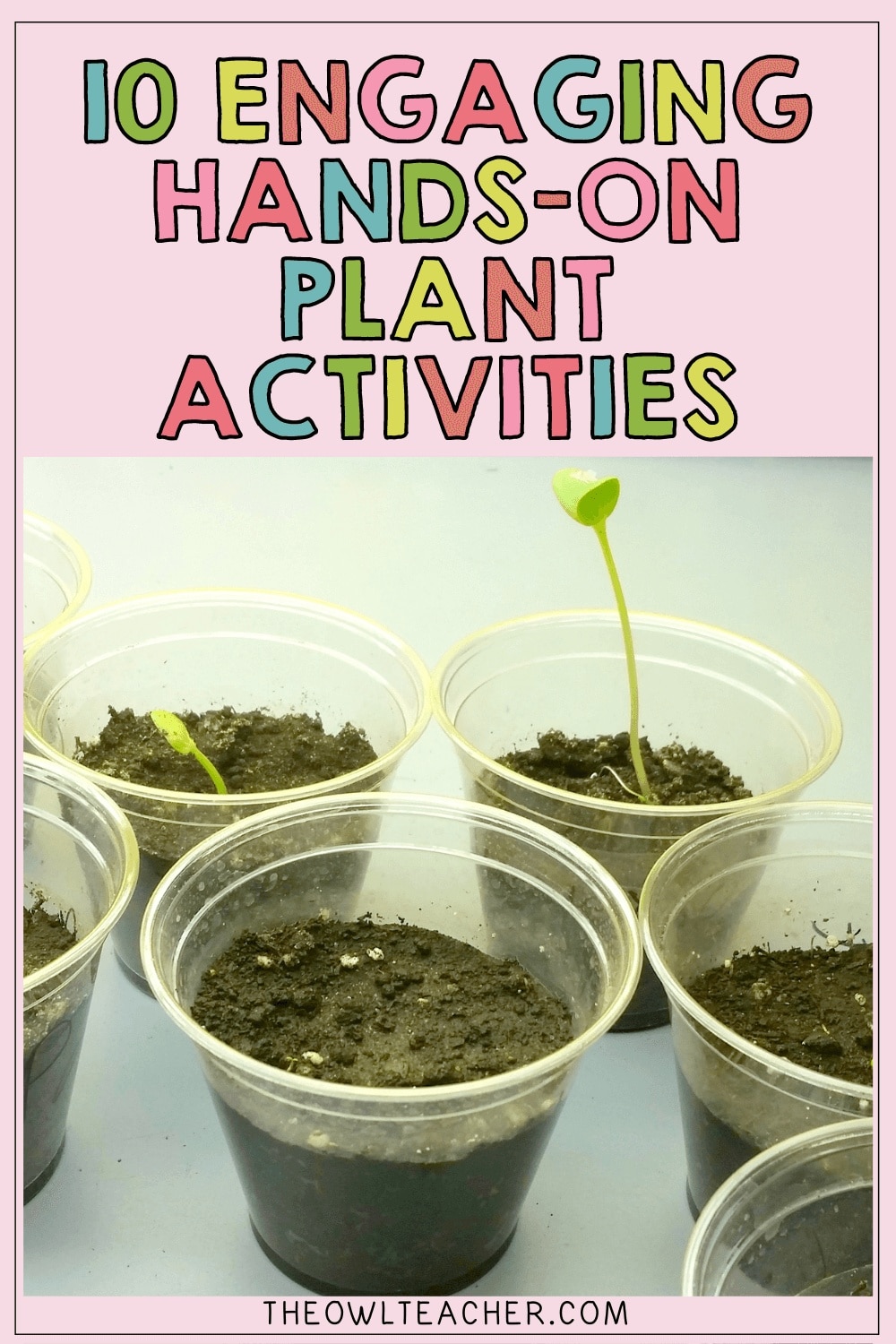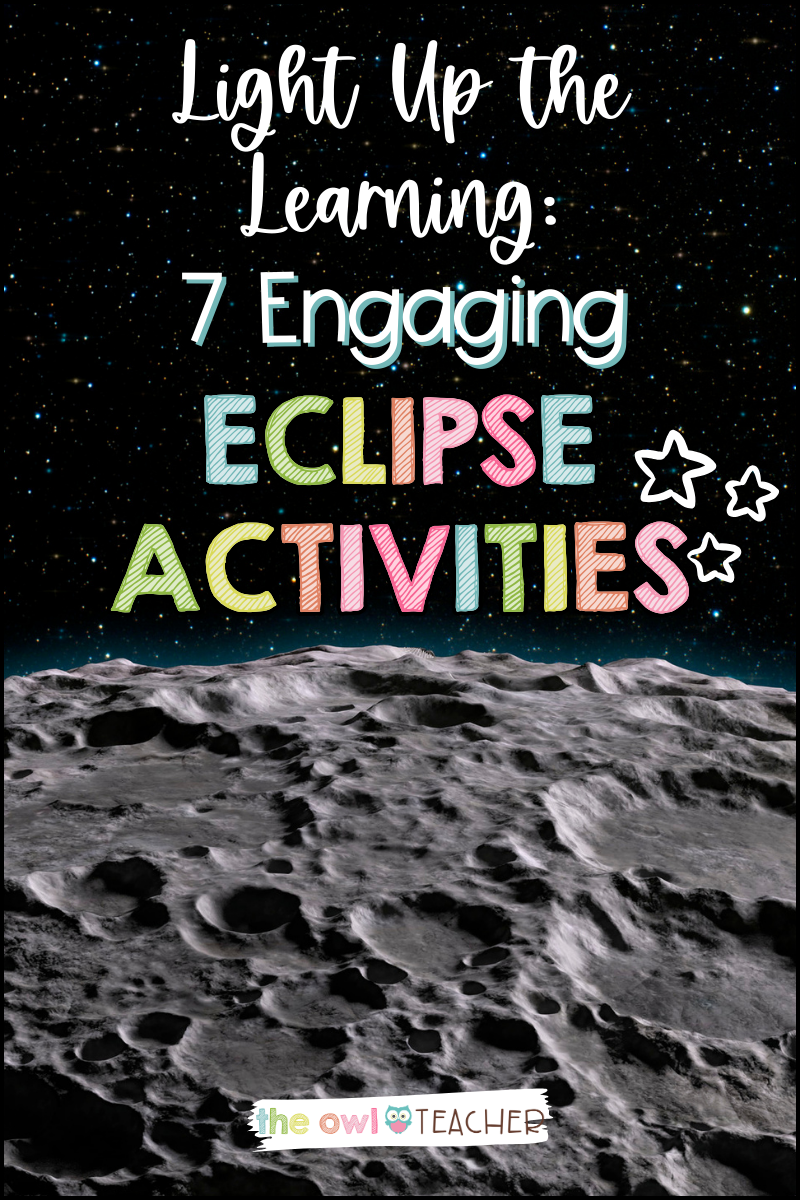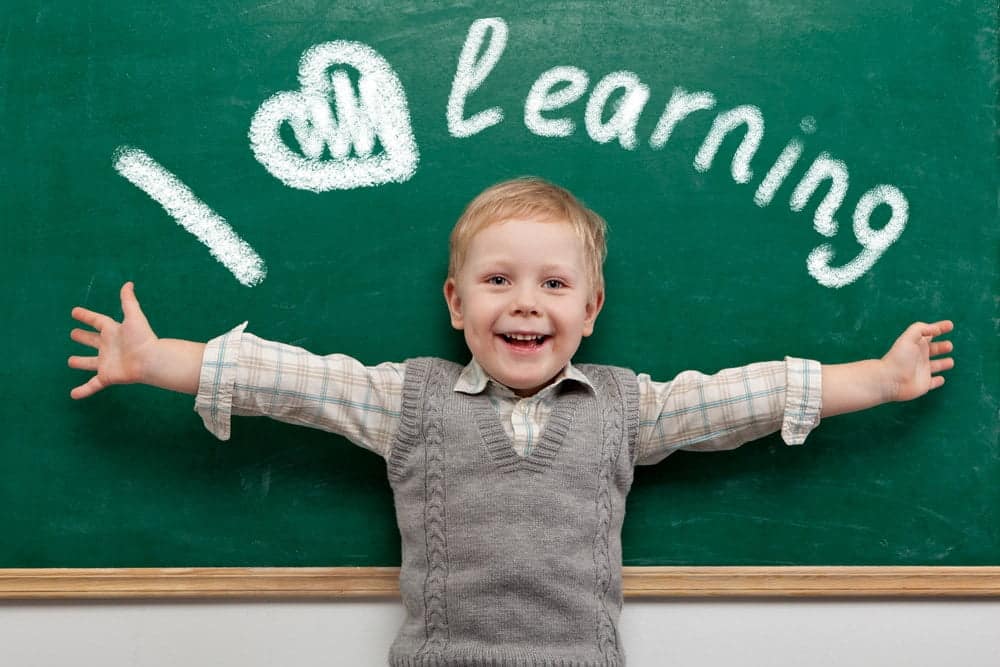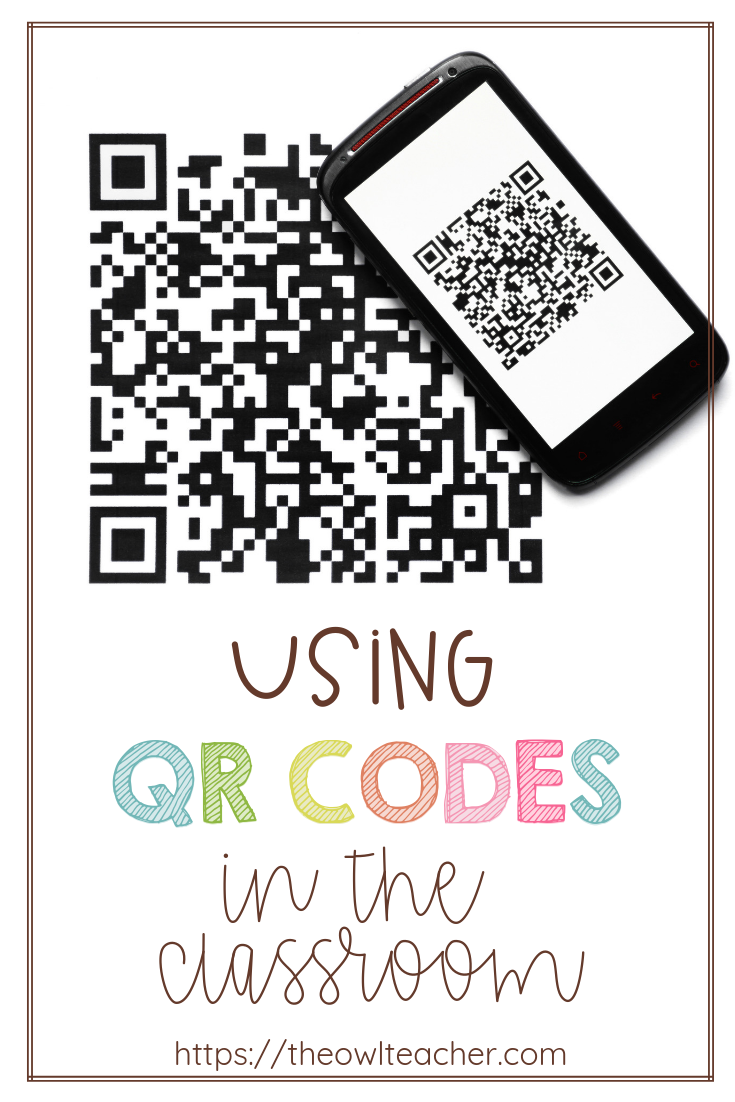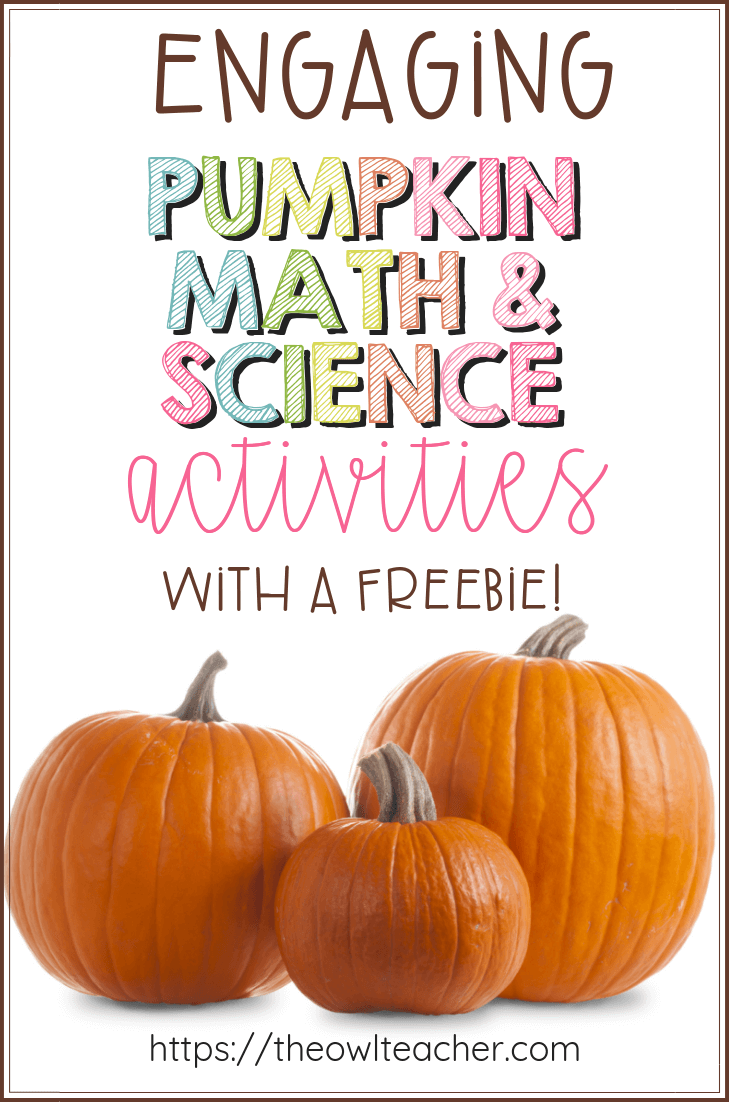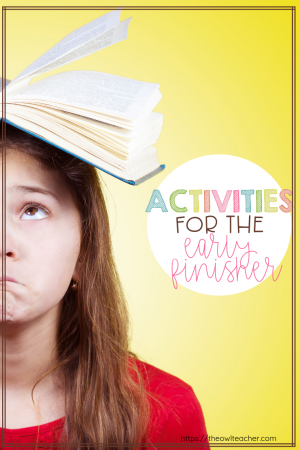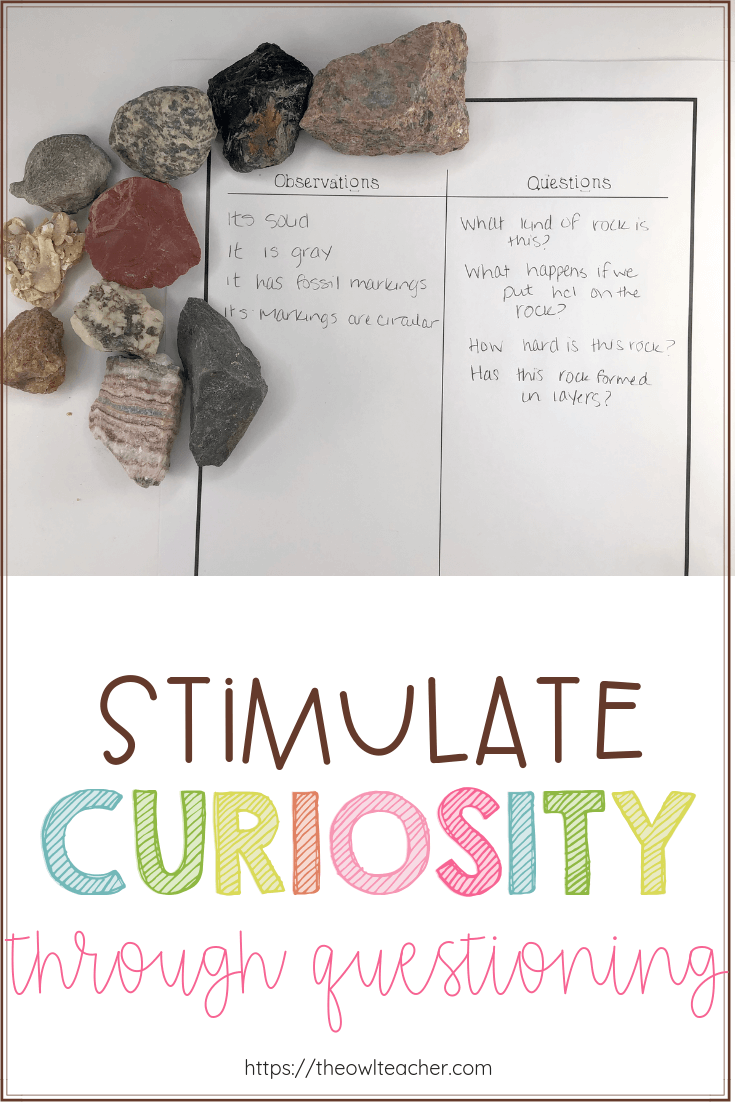
When youngsters are little they’re very inquisitive about every little thing round them, however as they become old this tends to decrease. How can we, as lecturers, recapture this creativity? We are able to stimulate curiosity in our college students by instructing them to ask the proper of questions. On this put up, I’ll share find out how to educate college students to ask these questions in a manner that’s partaking and can be utilized recurrently in science.
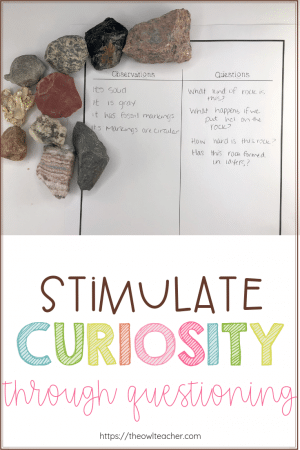
Stimulate Curiosity with the Proper Type of Questioning
Each classroom entails questioning, however it’s usually pushed by questions that lecturers pose and generally, they’re on the recall or reminiscence degree of questioning. These aren’t the sorts of questions that can elicit curiosity in college students. In science, these teacher-centered questions promote commonplace investigations which in flip results in a “formulaic” form of follow reasonably than college students really studying to conduct investigations or remedy issues. As a substitute of instructing the step-by-step “formulaic” strategies of science, we must always as a substitute use what feels genuine to college students, corresponding to taking their observations, turning them into questions, after which studying to research them.
Day 1 – Observations
Earlier than we are able to educate college students to ask the proper questions, we have to get them to ask any query. We start this by way of the method of remark.
Break college students up into teams and supply every group with a set of objects associated to your unit of research. For example, for those who’re learning an Earth unit, you possibly can present soil, sand, rocks, grasses, timber, and water. If you happen to’re learning a plant unit, you possibly can present them with seeds, leaves, grasses, timber, weeds, bark, and flowers to look at.
First, ask college students what they suppose make a very good remark. Subsequent, mannequin to college students find out how to make correct observations and to fill in a t-chart just like the picture beneath. Then have college students full their t-chart primarily based on the gadgets of their group. College students can write or draw their observations.
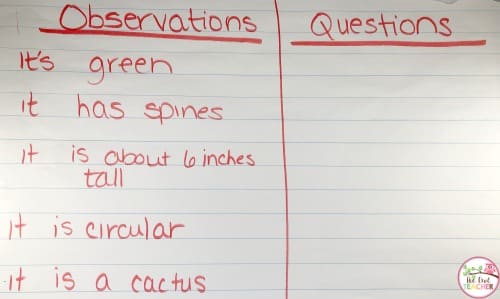
In spite of everything college students have created an inventory of their remark questions, have them flow into across the room and pay attention to different college students’ lists. This can be a good time to debate what they noticed and in the event that they matched or not. Then present them with these questions to debate as a bunch.
Day 2- Creating Questions
Take your modeled observations from yesterday and mannequin to the category find out how to flip these observations into questions. Attempt to create quite a lot of questions, corresponding to measuring and counting questions, how questions, why questions, downside posing questions, comparability questions, and so forth.
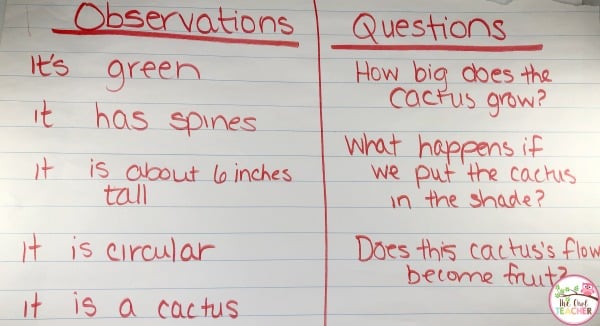
Then present an merchandise on the entrance of the classroom, corresponding to a cactus, a lava lamp, or a rock with a fossil and have college students follow creating questions associated to that merchandise. You may assist college students with the wording, however don’t throw questions on the market. Bear in mind, to start with, questions will probably be extra “easy” and over time with follow change into extra “subtle.”
After college students have practiced creating questions and you’re feeling they’re prepared, have them then return to yesterday’s t-chart and full the opposite aspect primarily based on their observations.
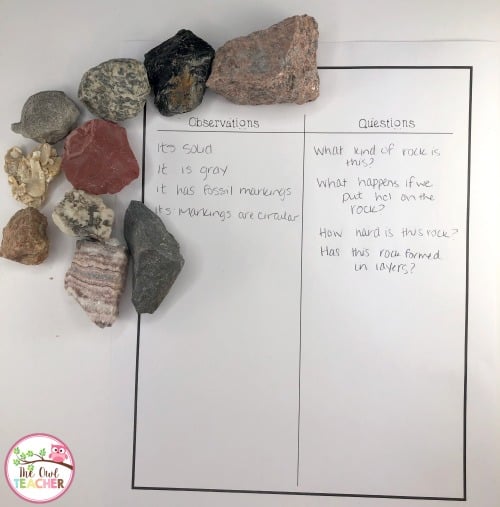
Day 3- Classifying Questions
Now that college students have really created questions, it’s essential for them to find out if they’re “investigative questions” or “searchable” questions. (Some questions may very well slot in each classes.)
To start this portion of the lesson, create and print instance questions which can be reduce up into strips (just like the picture beneath). Present these strips for every group. Have the scholars type them primarily based on whether or not they may (with correct gear) gather knowledge to reply the query (investigative) or simply search for the reply (searchable).

After college students have sorted them of their teams, talk about collectively how they selected to type the questions. Make clear any misconceptions (and that is additionally a very good time to go over the questions that match into each classes) after which have college students return to their checklist of questions on their t-chart and kind these into the 2 varieties. College students might have so as to add inquiries to have a minimum of 3 of every sort.
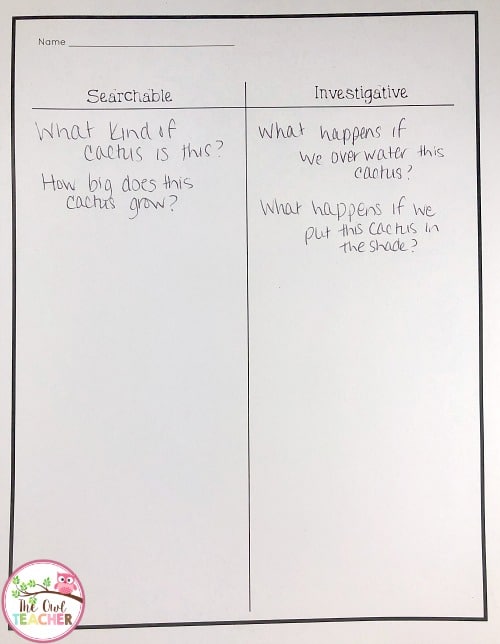
What to Do With the Questions
Now that you’ve these two units of questions (which you could compile collectively as a complete class if desired) you should utilize these that can assist you plan your classes to maintain college students’ pursuits and curiosity piqued all through the science unit! Among the questions might be investigations you possibly can use, whereas the opposite questions you possibly can have scholar analysis or be taught as you progress by way of the unit.
When college students are curious and filled with surprise, they’re undoubtedly going to be taught extra and have a excessive degree of engagement! Educating college students to create their very own questions by way of the usage of observations initially of science models is a good place to start out!

Try these different nice concepts for uplifting surprise and curiosity with higher elementary college students!
From Left to Proper:
“Writing Riddles” for Mini-Analysis in Science | Tarheelstate Instructor
3 Methods to Strengthen Scholar Questioning Throughout Studying | Assume Develop Giggle
Modifying Math Phrase Issues to Encourage Curiosity | Combine and Math
Surprise Partitions & STEM Challenges | Kerry Tracy
Phrase Wonders: Gathering Multisyllabic Phrases | Studying by Coronary heart
Utilizing Seen Considering to Learn With Surprise | Wild Little one’s Mossy Oak Musings
Stimulating Curiosity by way of Questioning | The Owl Instructor
Inspiring Curiosity by way of Expertise | Love Studying
Mathematicians Encourage Surprise & Curiosity | Tried and True Educating Instruments
Taking KWL Charts Up a Notch | Elementary Inquiry
Curiosity within the Classroom: 5 Steps to Engagement and Creativity | Mikey D Educate



